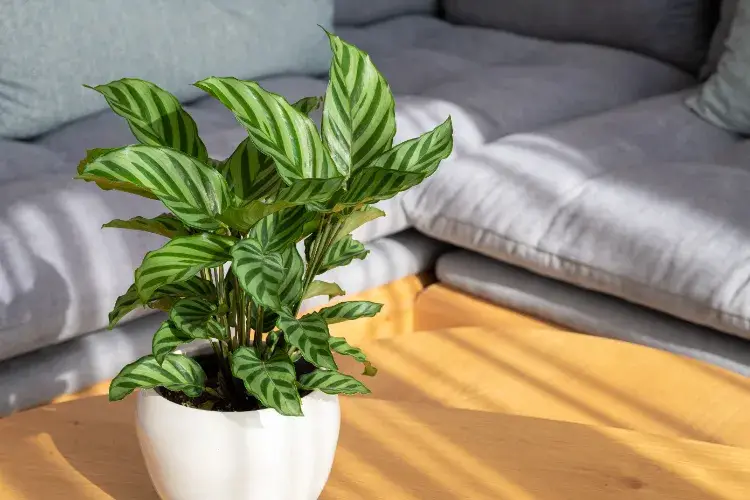Calathea, renowned for its striking foliage and diverse varieties, has become a favorite among indoor plant enthusiasts. Known for its lush, patterned leaves that fold up at night and unfurl during the day, this tropical beauty requires specific care to thrive. To help you keep your Calathea in top condition, here are five essential tips for its maintenance.

1. Provide the Right Temperature
Calathea thrives in a warm and humid environment, similar to its native Amazon habitat. Ensure the temperature stays above 15°C year-round. During colder months, indoor heating can dry out the air, so regularly spray the plant to maintain humidity levels. This will help replicate the plant’s natural conditions and promote healthy growth.
2. Choose the Perfect Spot
In its natural habitat, Calathea grows under the canopy of dense, tropical vegetation, making shade and humidity crucial. Place your Calathea in a semi-shaded area away from direct sunlight and drafts. If you have a bright bathroom with a window, it can provide an ideal environment for this plant, balancing light and moisture levels effectively.
3. Water Correctly
Proper watering is key to keeping your Calathea healthy. During spring and summer, water it regularly, aiming to keep the soil slightly moist. In autumn and winter, reduce the frequency and allow the surface of the soil to dry out between waterings. Additionally, mist the foliage with non-calcareous water to enhance humidity and mimic its natural tropical habitat.
4. Repot When Necessary
Repotting Calathea is essential for its growth. Aim to repot the plant once a year or every two years, particularly if it has outgrown its pot. When repotting, refresh the top layers of soil and remove any withered or faded leaves to encourage new growth. This practice helps maintain a healthy root system and supports continued blooming.
5. Watch for Pests
Be vigilant for pests such as red spiders, which thrive in dry conditions. If you notice these pests, increase the frequency of misting to boost humidity. Also, avoid waterlogging by removing excess water from the saucer, as it can lead to root asphyxiation and fungal diseases like botrytis. Additionally, if the leaves start turning to one side, it may indicate insufficient light; adjust the plant’s position to ensure it receives adequate illumination.
Final Thoughts
By following these straightforward tips, you can ensure that your Calathea remains a vibrant and striking addition to your indoor space. Regular attention to its temperature, light, watering needs, and repotting schedule will help it flourish.



